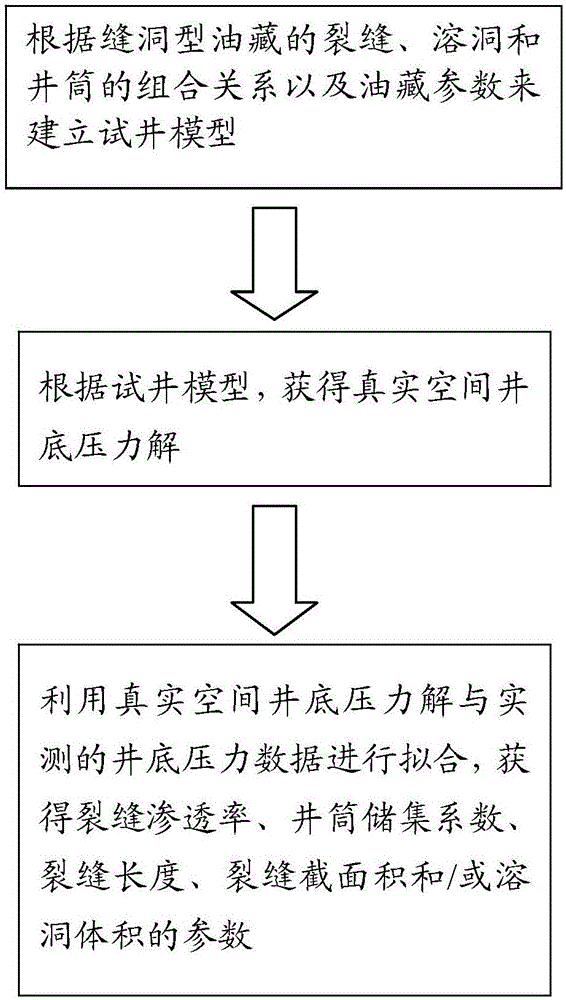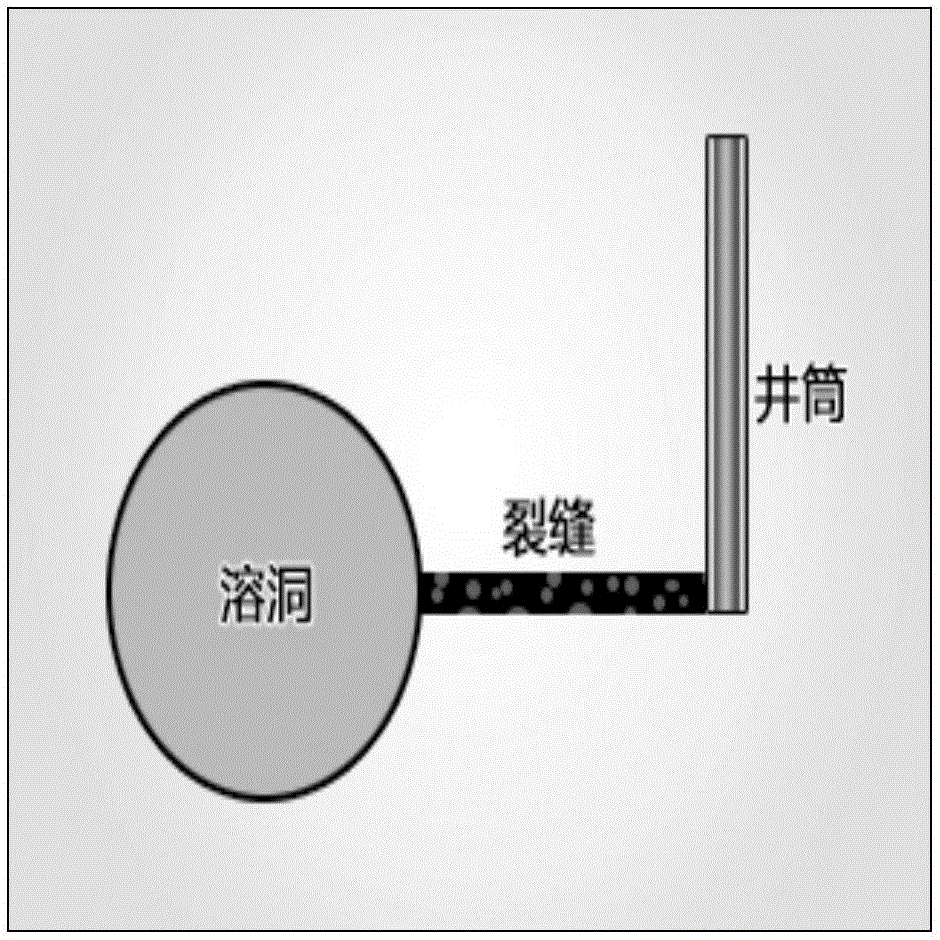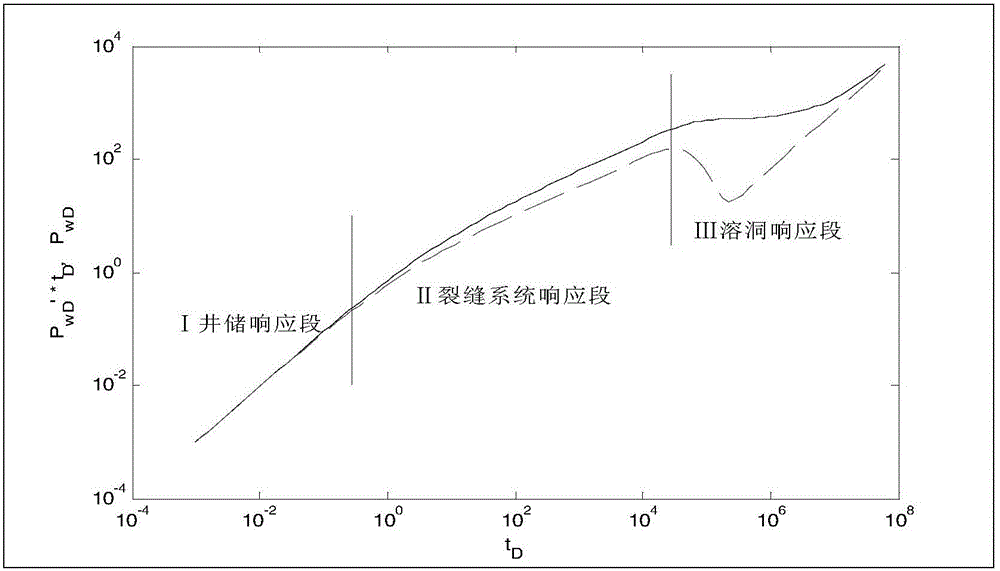Well test explanation method for cave volume calculation
A technology of well test interpretation and volume calculation, which is applied in calculation, design optimization/simulation, and special data processing applications, etc., and can solve the problem of unfavorable oilfields that are commonly used in unfavorable oil fields. Dissolved cave volume and other issues in fractured-vuggy reservoirs
- Summary
- Abstract
- Description
- Claims
- Application Information
AI Technical Summary
Problems solved by technology
Method used
Image
Examples
Embodiment 1
[0099] figure 1 The flow chart of the well test interpretation method for the calculation of the volume of the karst cave in embodiment 1 comprises the following steps:
[0100] Step 1. Establish a well test model according to the combination relationship of fractures, caves and wellbore in fractured-cavity reservoirs and reservoir parameters;
[0101] Step 2. According to the well test model, obtain the bottomhole pressure solution p in real space wD (t D );
[0102] Step 3. Using real space bottomhole pressure to solve p wD (t D ) are fitted with the measured bottomhole pressure data to obtain the parameters of fracture permeability, wellbore storage coefficient, fracture length, fracture cross-sectional area and / or cave volume.
[0103] Among them, step 2 also includes:
[0104] Step 2.1: Solve the well test model by using Laplace transform to obtain the bottomhole pressure solution function in Laplace space
[0105] Step 2.2. Using the Stehfest numerical inversion...
Embodiment 2
[0117] figure 2 It shows the combined relationship of fractures, caves and wellbore in the well-fracture-cavity well test model according to Example 2 of the present invention. The difference between the well test interpretation method in Embodiment 2 of the present invention and Embodiment 1 above is only in Step 1, and other calculation and solution methods are basically the same as Embodiment 1. In Example 2, the combined relationship of fractures, caves and wellbore includes: both the cave and the wellbore are one, and the bottom of the wellbore and the cave are connected through fractures, and the well test model thus established is called well-fracture-cavity well test model.
[0118] Among them, reservoir parameters include: p i Original formation pressure (MPa); p f Fracture pressure (MPa); p v Cave pressure (MPa); p w Bottom hole pressure (MPa); k f Fracture permeability (um 2 ); μ fluid viscosity (mPa.s); Fracture porosity (%); Karst cave porosity (%); C ...
Embodiment 3
[0154] Figure 5 It shows the combined relationship of fractures, caves and wellbore in the well-cavity-fracture-cavity well test model according to Example 3 of the present invention. The difference between the well test interpretation method of Embodiment 3 of the present invention and the above-mentioned Embodiment 1 lies in Step 1, and other calculation and solution methods are basically the same as Embodiment 1. In this embodiment 3, the combined relationship of fractures, karst caves and wellbores includes: having a first karst cave, a second karst cave, a fracture and a wellbore, the first and second karst caves are connected by fractures, and the bottom end of the wellbore is connected to the first or second karst cave. The two karst caves are connected, and the well test model thus established is called the well-cavity-fracture-cavity well test model.
[0155] Among them, reservoir parameters include: p i Original formation pressure (MPa); p f Fracture pressure (MP...
PUM
 Login to View More
Login to View More Abstract
Description
Claims
Application Information
 Login to View More
Login to View More - R&D
- Intellectual Property
- Life Sciences
- Materials
- Tech Scout
- Unparalleled Data Quality
- Higher Quality Content
- 60% Fewer Hallucinations
Browse by: Latest US Patents, China's latest patents, Technical Efficacy Thesaurus, Application Domain, Technology Topic, Popular Technical Reports.
© 2025 PatSnap. All rights reserved.Legal|Privacy policy|Modern Slavery Act Transparency Statement|Sitemap|About US| Contact US: help@patsnap.com



